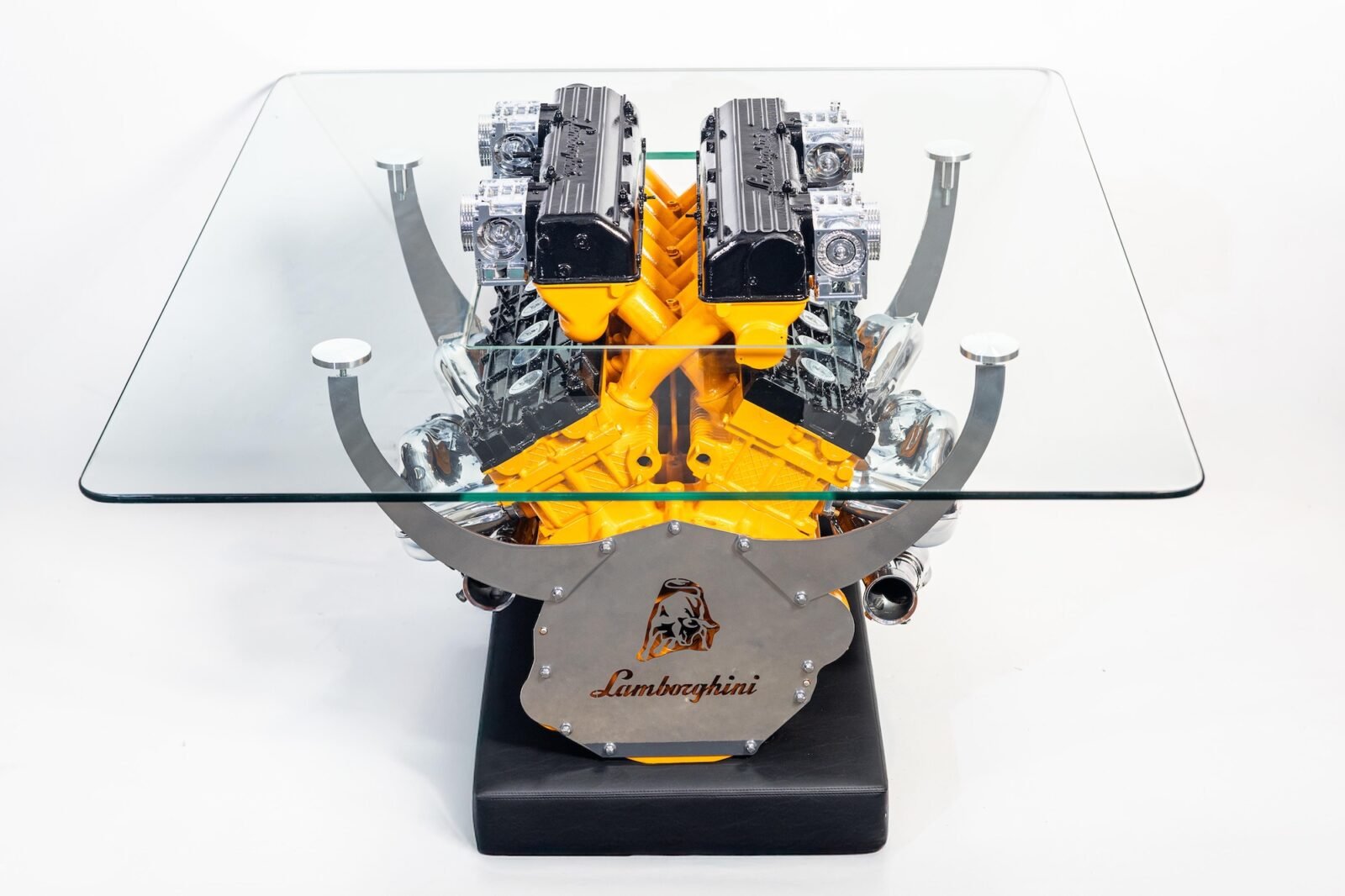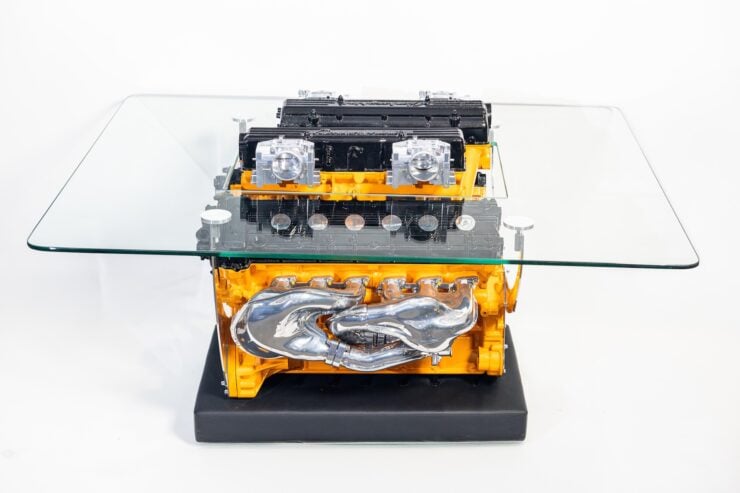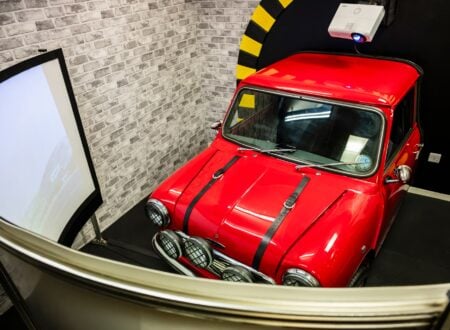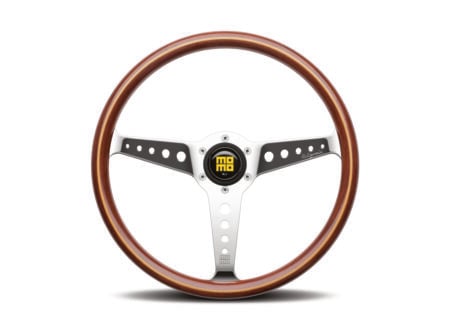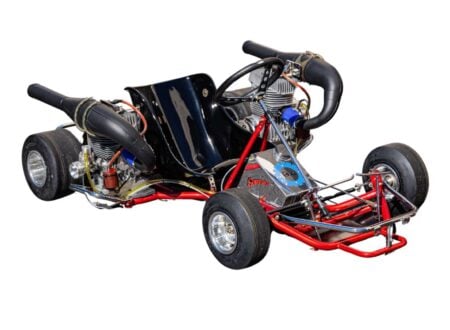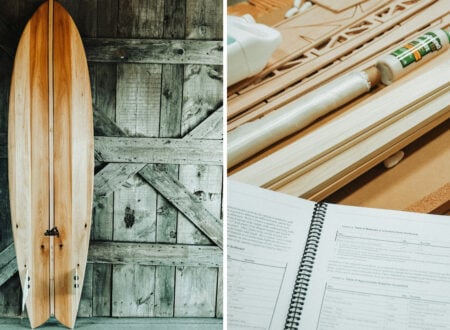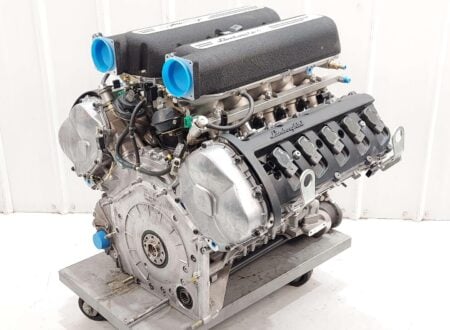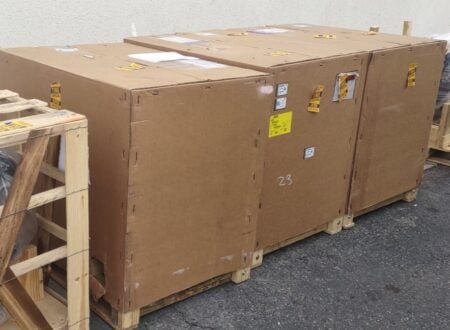This is a coffee table made from a real Lamborghini Murcielago V12. It has a half-inch-thick tempered glass table top with a cutout center section to allow the intake to rise through the middle.
The Murcielago would be the last Lamborghini to be powered by the firm’s long-running V12 engine – an engine that had debuted all the way back in 1963.
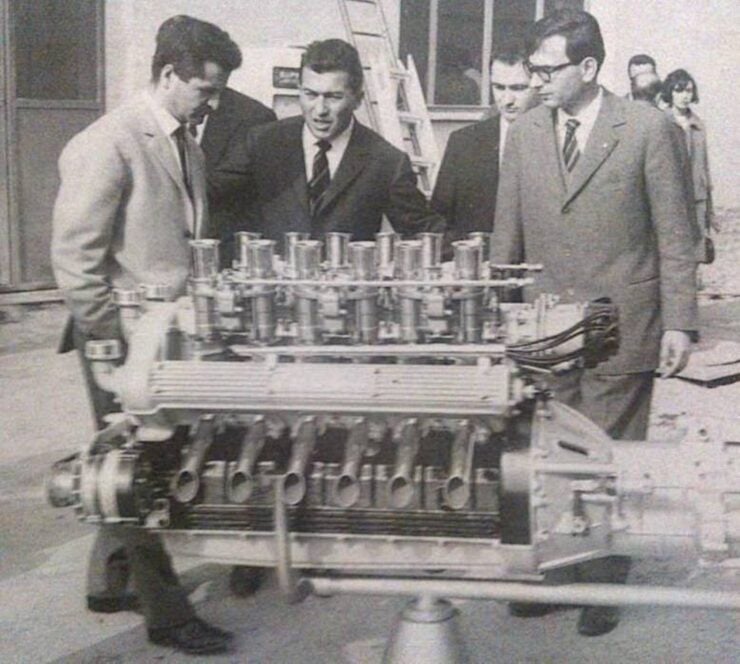

The Argument That Sparked A V12 Arms Race
The story of the Lamborghini V12 begins not with a drawing board, but with an argument. In fact it might very well be the most famous argument in the history of the automobile.
Ferruccio Lamborghini, a wealthy tractor magnate and an avowed sports car enthusiast, was dissatisfied with the the repeated clutch issues with his Ferrari 250 GT. When he voiced his complaints directly to Enzo Ferrari, along with some suggestions for improving the design, he was dismissed with contempt. Enzo reportedly said something along the lines of: “You keep building your tractors and you leave the sports cars to me.”
That moment lit the fuse. Lamborghini vowed to build his own grand touring car – not just as good as a Ferrari, but better.
In 1962, Ferruccio hired Giotto Bizzarrini, a former Ferrari engineer who had worked on the 250 GTO and many of Ferrari’s other legendary cars from the era. Bizzarrini was tasked with designing a new V12 that would set the tone for the new brand.
Bizzarrini was given clear instructions: the engine needed to be refined enough for a road car, but it had to make a statement, and be better than Ferrari’s Colombo V12. Lamborghini even offered a cash bonus for every horsepower the engine produced over 350.
Bizzarrini’s V12: Prototype to Production
Bizzarrini’s initial prototype was a racing engine in all but name. A 3.5 liter aluminum V12 with double overhead cams, hemispherical combustion chambers, a dry-sump, and six Weber 40 DCOE carburetors. On the dyno, it made upwards of 370 bhp at 9,000 rpm. Far too wild for a grand touring car, and so Lamborghini had it detuned to 280 bhp at 6,500 rpm for the production 350 GT, which debuted in 1964.
Though Bizzarrini’s tenure Lamborghini was relatively short – he left after reported disputes over engine tuning – his design endured for decades. The V12 was reworked by engineers like Gian Paolo Dallara and Paolo Stanzani to suit ever changing production needs. But its fundamental layout remained.
The engine grew over the decades: to 4.0 liters in the 400 GT and Miura, 3.9 in the early Countach, then up to 5.2 liters with four-valve heads by the 1980s. The Diablo saw displacement hit 5.7 liters with fuel injection, and by the 2000s, the Murciélago carried a 6.2 liter version with full electronic engine management.
The last variant of this V12 powered the Murciélago LP 670–4 SV. When production ended in 2010, Lamborghini closed the chapter on an engine that had defined nearly every flagship model from 1964 to 2010. From Ferruccio’s grudge to Bizzarrini’s enduring design, it remained the beating heart of the brand for close to half a century.
The Lamborghini Murcielago V12 Coffee Table Shown Here
The V12 you see here is a 6.2 liter version sourced from a Lamborghini Murcielago. It was built into the coffee table you see here today which still has the intake and the beautifully sculpted exhaust manifolds in place.
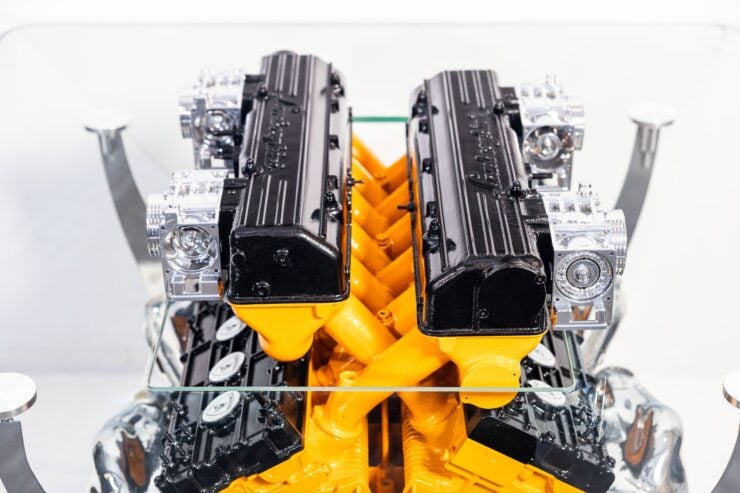

The tempered glass tabletop measures in at 60 inches by 55 inches and it’s half-an-inch thick. It also has a center cutout to allow the intake to rise through the middle. It’s mounted on caster wheels to make moving it around a little easier, an essential add-on as it does weight 250 lbs.
It’s now due to roll across the auction block with Bonhams in mid-August with a price guide of $35,000 – $55,000 USD. If you’d like to read more about it or place a bid you can visit the listing here.
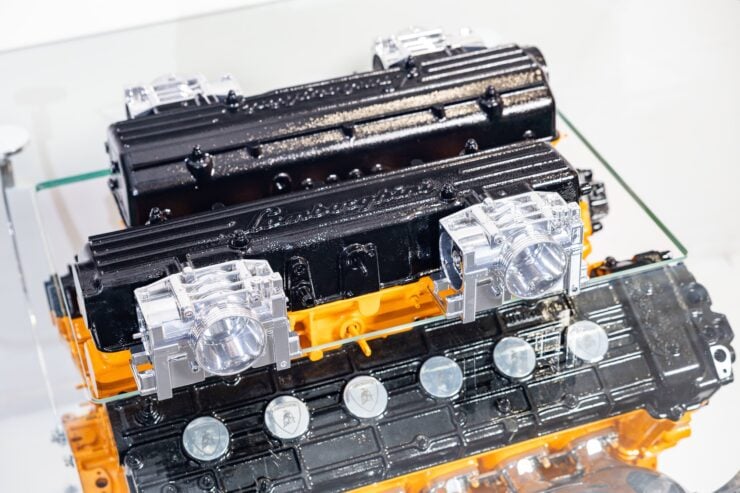
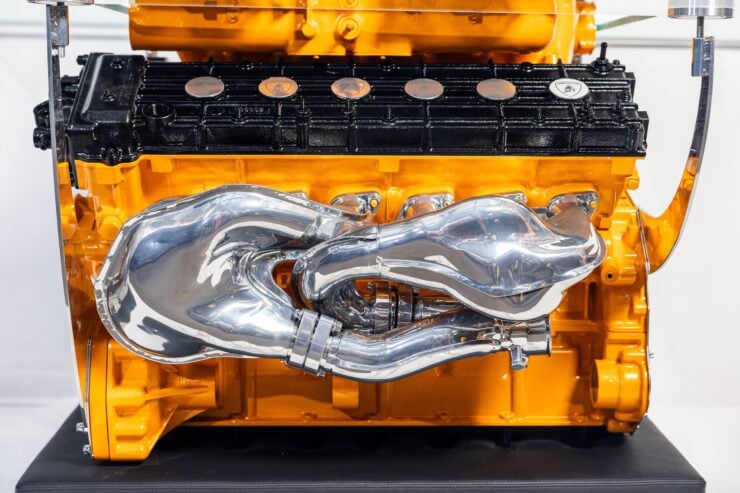
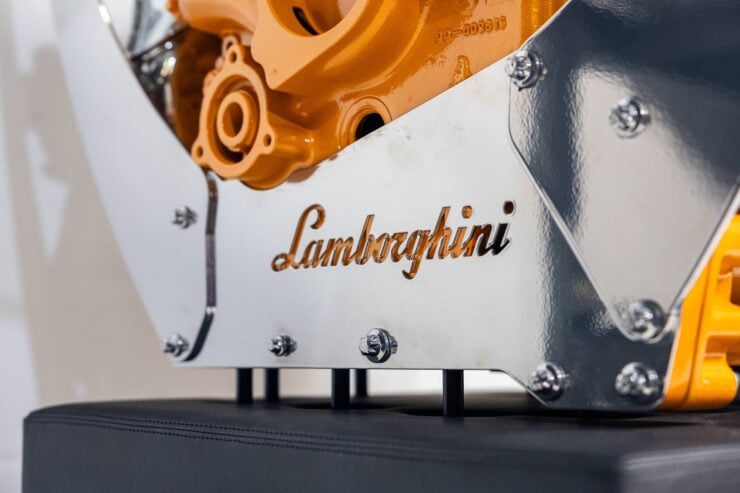
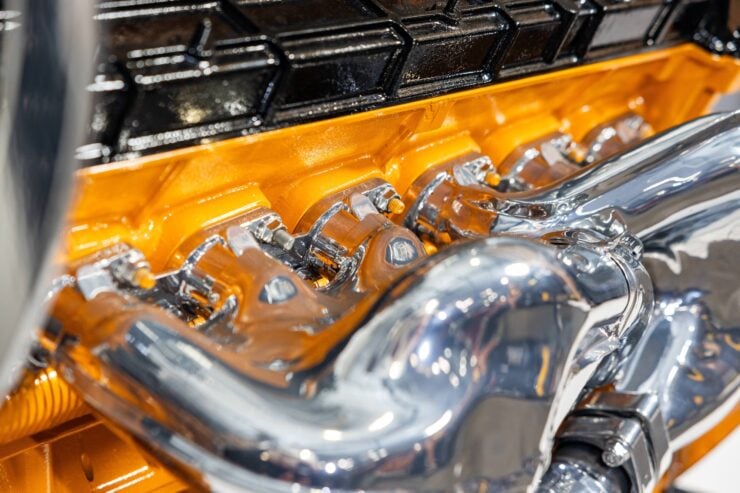
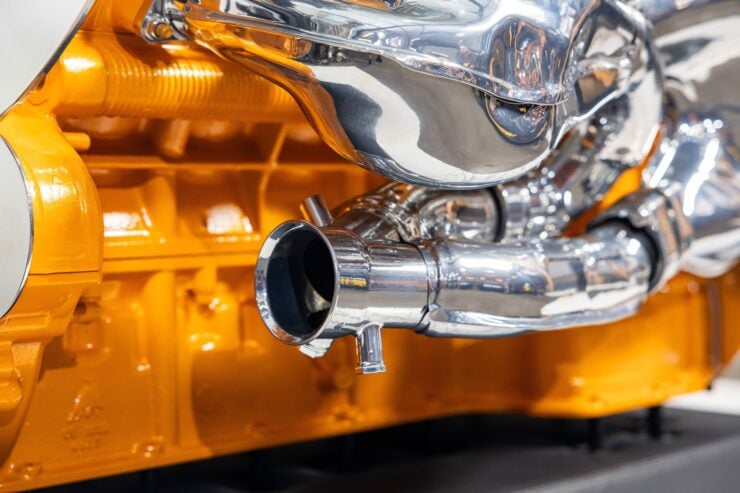
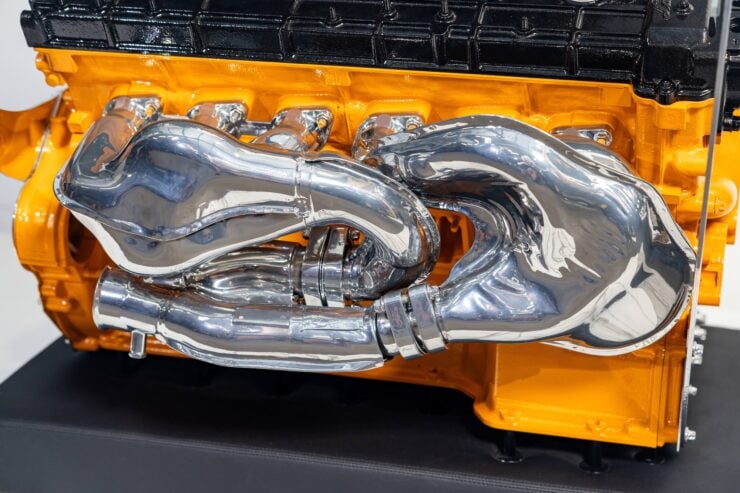
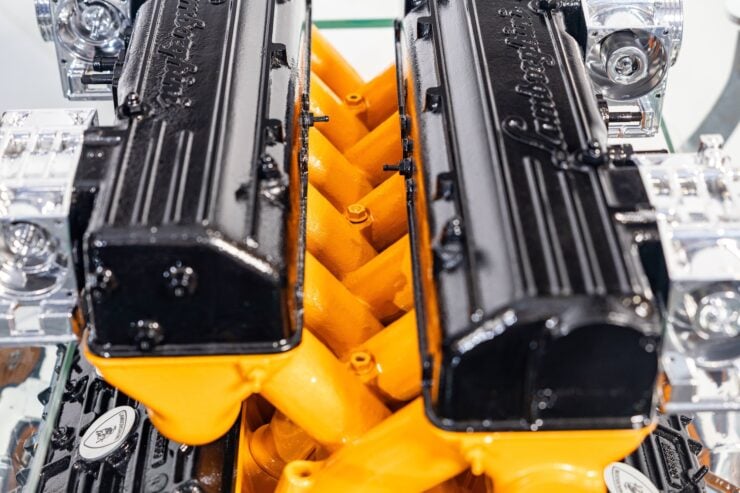
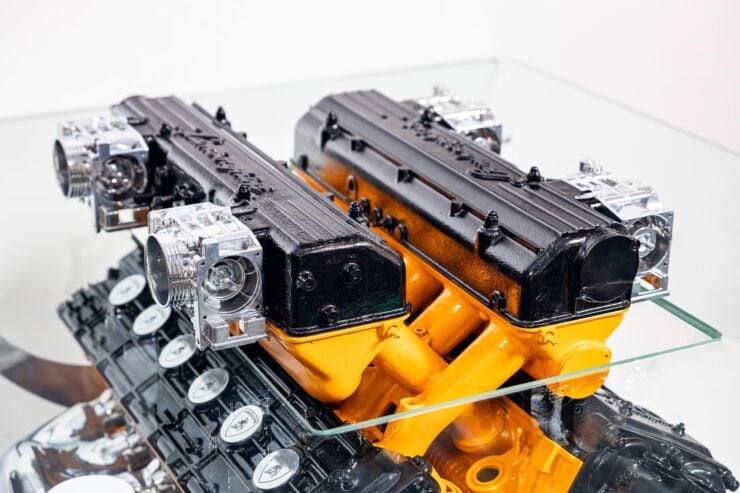
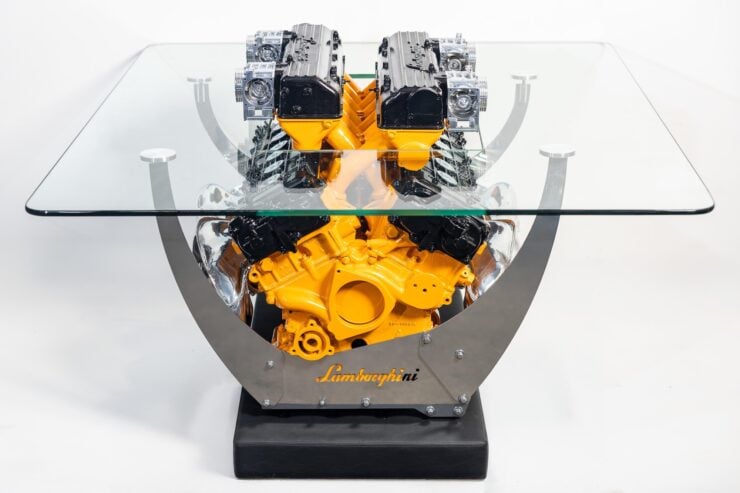
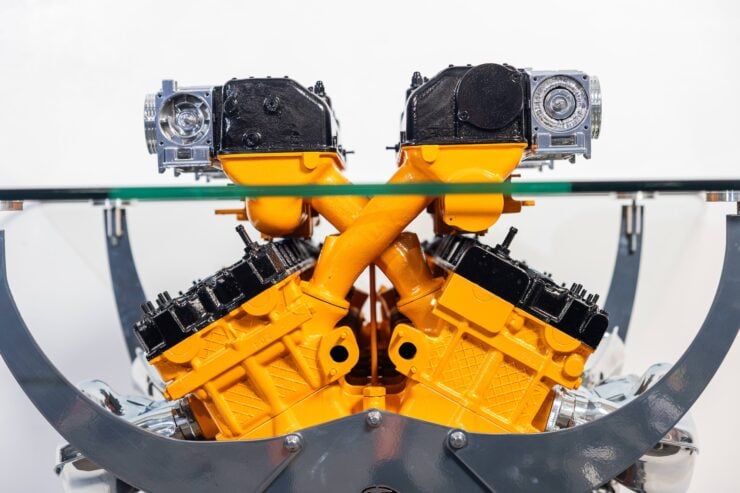
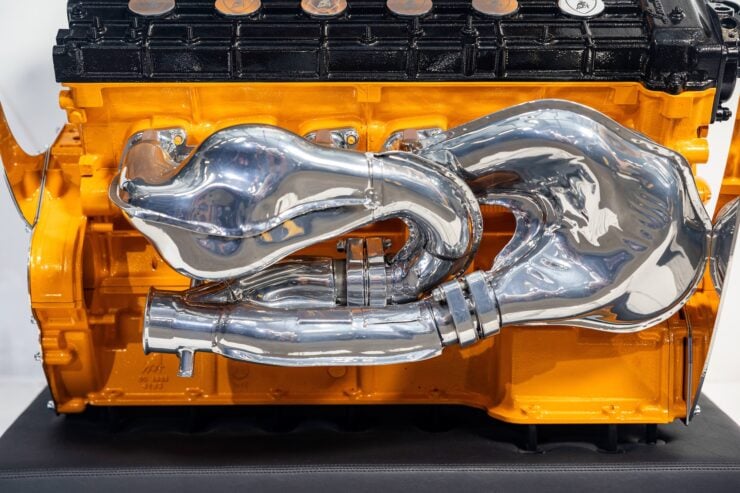
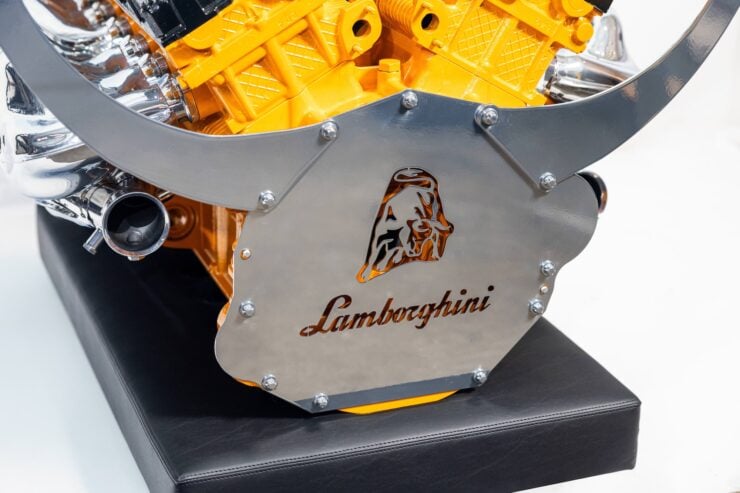
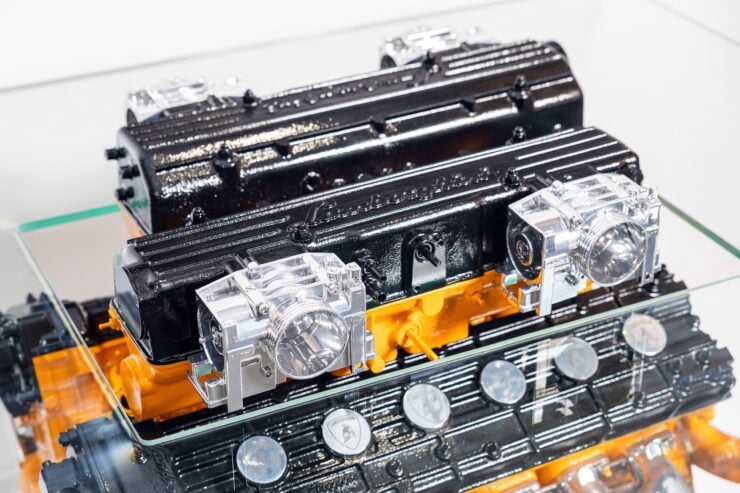
Images courtesy of Bonhams + Lamborghini

